The public seems unimpressed by supermarkets’ selling fuel at a higher margin – but they are keen to disprove allegations of ‘greedflation’
‘Rip-off retailers to be outed’ shrilled a government response to the competition watchdog’s investigation into fuel pricing, with a host of media headlines pointing fingers at “greedy” retailers.
The incendiary reaction to the CMA’s year-long investigation into the road fuel market was based on the body’s finding that increased supermarket fuel margins, representing a 6p a litre expansion from 2019, had effectively cost consumers almost £1bn in 2022 alone.
Supermarkets have been using motorists as “cash cows”, according to energy secretary Grant Shapps, “putting upwards pressure on inflation”.
The latest fire rained upon supermarkets further solidified the narrative of ‘greedflation’, which appears to be chiming with the public. Research from The Grocer’s sister publication Retail Week recently found 75% of shoppers think supermarkets are profiteering.
Understandably, the reaction to the CMA report has been a source of frustration for those in the industry.
Sainsbury’s CEO Simon Roberts pushed back this week: “Three years ago, the government was leading the calls to thank supermarkets for the contribution we had made [in feeding the nation],” he says. “Yet here we are 2.5 years later being unfairly accused of profiteering.”
The supermarkets feel their fuel pricing position has been misrepresented.
The CMA report focused specifically on supermarket prices, and it is widely acknowledged margins have expanded at supermarkets in recent months and years. But crucially, the grocers remain the clear price leaders.
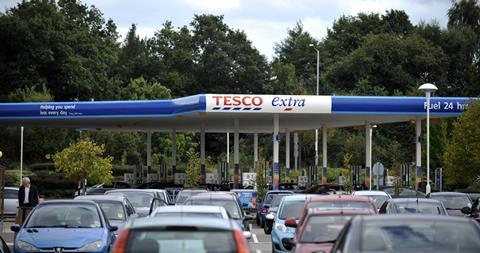
Cheapest options
Research commissioned by The Grocer shows the average supermarket price at the pump has been 2.7p cheaper than the industry average for petrol and 3p cheaper for diesel since the start of 2021. The gap in April 2023 (before the CMA investigation was announced) was actually higher than the post-2021 average by 4.0p and 4.3p.
Asda in particular was singled out for criticism given its traditional role as the most aggressive on pricing before its change of ownership to the Issa brothers and TDR Capital, its subsequent merger with forecourt giant EG Group, and the resultant fuel margin expansion.
Read more:
-
What will the CMA’s ‘fuel finder’ mean for independent forecourts?
-
The three big questions raised by CMA fuel finder price comparison proposals
-
Asda the obvious suspect in road fuel competition enquiry – but not so fast
-
Supermarkets face competition probe after profiteering claims
But Asda remains the supermarket with the lowest pump prices in every month in The Grocer’s data since November 2021. “Asda have been fitted up here,” a rival sympathises.
One supermarket source asks: “Why aren’t the margins of the rest of the fuel sector part of the debate? The discussion has become untethered from the complex CMA document and distilled down to ‘rip-off supermarkets’ without much analysis.”
The supermarkets stress the need to look at the wider picture around margins and profitability across their business.
Fuel margins have risen partly because of fixed cost inflation, in terms of energy, staffing and transportation. But the way the supermarkets are using petrol in their business mix has also changed.
“A decade ago, supermarkets were using fuel as a key value indicator and trying to drive traffic to their stores with offers,” says one retail industry consultant. “Price competition is now focused on countering the growth of the discounters on core food lines.
“The discounters don’t offer fuel so it makes sense to be less aggressive on fuel pricing.”
That’s because, while fuel was previously a more powerful driver of footfall for the weekly shop, changes in shopper behaviour – most notably the increased role of convenience and online – has changed the dynamic.
As Ged Futter, founder of The Retail Mind, says: “Supermarkets are not just fuel retailers and this seems to have been forgotten. For years fuel was sold cheaply to bring customers through the door. When this stopped working, retailers looked at what mattered more to customers, and the answer is cheaper food.”
Sainsbury’s boss Roberts made a similar point that the margin balance partly reflected a commercial decision about where to focus investment.
“If it’s a choice between subsidising fuel and milk, I know which one I want to subsidise,” he said. “But we have 4% of [fuel value] sales and take 10% of total [volume] share of fuel. I also know what good value we offer.”
Margins
The two listed supermarkets, Tesco and Sainsbury’s, show how this balance has played out, with underlying retail trading profit margins (which include fuel) declining in 2022/23 as any extra margin made on fuel is more than reinvested in the core grocery offer.
The core recommendation of the CMA was a plan for a ‘fuel finder scheme’ underpinned by new compulsory open data requirements – and these are supported by the supermarkets, who acknowledge regional pricing can throw up discrepancies that would benefit from being smoothed, but also arguably have the most to benefit from greater transparency.
“Why aren’t the margins of the rest of the fuel sector part of the debate?”
Shore Capital analyst Clive Black also suggests the focus on supermarket margin is “deflecting attention from something way more important to the price of forecourt fuel, and so the costs of low income working families in particular: duties.”
In mid-2020, about 70% of the price of petrol went to the government in duties and VAT. After falling, it has recently crept back above 50% as prices have reduced.
Nevertheless, the “greedflation” narrative is proving difficult to counter. “It can be a complicated message to get across as few of the public are looking at financial accounts and comparing financial metrics,” says one retail source.
Grocery retailers particularly object to the notion they are not supporting the public at a time of unprecedented inflation.
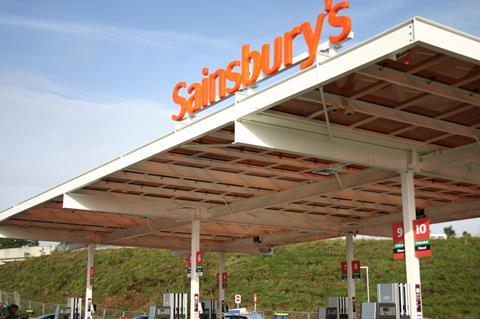
Just this week, Morrisons became the first UK supermarket to introduce a range of value tier products to its convenience stores – something CEO David Potts stressed was margin dilutive.
“Speaking plainly, convenience stores don’t stock entry-price point products because they make very little, if any, money and do not fit with the significantly higher cost structure of c-stores,” he said.
In terms of the wider industry, a little inflation has typically been positive for the sector because of operational leverage as it drives extra revenues, which flow to the bottom line.
But the scale of the cost inflation seen across energy, labour, logistics and elsewhere has undermined and reversed the usual residual benefit.
Even in fuel, huge inflation seen at the pumps has resulted in less fuel sold – not good news for the supermarkets. The lower volumes were also a driver to take more margin back.
Supermarket fuel is undeniably more expensive than it was pre-Covid on a relative basis. But it remains difficult to see how businesses making less money in a famously competitive sector are in a position to rip anyone off.
“Those spouting the myth of supermarket greedflation have an axe to grind,” Futter concludes. “The problem is their evidence is non-existent.”







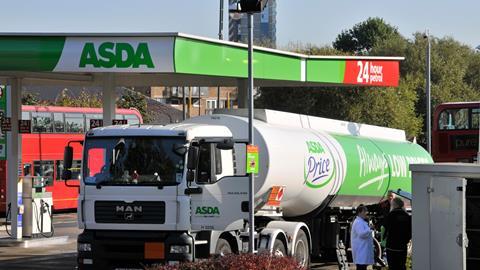
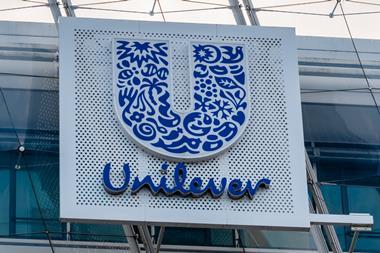
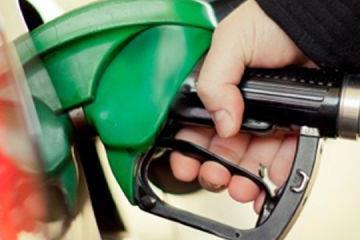










1 Readers' comment